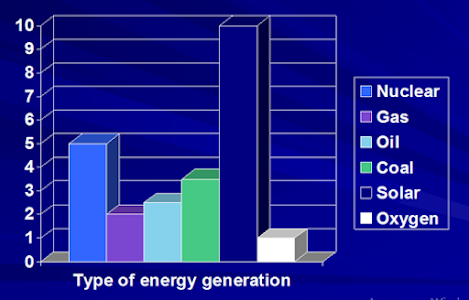Project for the production of cheap, environmentally friendly hydrogen.
The project of creating an experimental plant for the production of hydrogen by electrolysis of water and with an internal cycle of energy.
(project announcement)
The project provides for the development of an integrated technology with the creation of an experimental plant for the production of cheap hydrogen in an environmentally friendly way.
This technology provides for the production of hydrogen by electrolysis, but at the expense of the internal energy of this process. Internal energy means the energy released from the process of spontaneous ionization of oxygen, which is released from water simultaneously with hydrogen. In conventional electrolysers, oxygen is vented to the atmosphere, and in the proposed project it is used to generate energy.
That is, this power generation mechanism is an energy system built into the structure of a hydrogen production plant that uses oxygen generated by an electrolyzer to generate power. And this energy is spent on the operation of the electrolyzer itself. Thus, in the proposed installation, the internal circulation of energy is carried out.
This technology is capable of providing the production of 1 kilogram of hydrogen (11 cubic meters) at the cost of electricity received from outside within 4-5 kWh. The maximum power consumption will be 5 kWh. for the production of 1 kg (11 m3) of hydrogen.
As a result of the combustion of 1 kilogram of the produced hydrogen, 120 MJ of thermal energy is released, which can be converted into 12-15 kWh. electrical energy (taking into account the efficiency of energy conversion mechanisms).
In simpler terms, this technology will make it possible to produce 1.5 kilograms of hydrogen from 10 kilograms of water at an electricity consumption of up to 8 kWh, or to generate 1.2 kilograms of hydrogen without additional energy consumption.
The productivity of the pilot plant proposed for the project will be at least 450 cubic meters of hydrogen per hour. Such industrial-type installations can be produced with a productivity of up to 10,000 cubic meters (900 kg) of hydrogen per hour or 21.6 tons per day. If you need more capacity, you can use several units in parallel.
Thus, this technology is already a cost-effective technology for hydrogen production today. This hydrogen production process is 5-6 times more efficient than the best existing hydrogen production methods.
Today, the production of 1 kilogram of hydrogen costs $ 5-6, and long-term plans provide for a two-fold reduction in this price in 20-30 years.
When using the hydrogen production technology we offer, the cost of its production can be about $ 0.8-0.9 per 1 kg, or $ 0.07-0.08 per 1 cubic meter. And this is 4 times lower than international long-term plans for 30 years ahead and 7-8 times lower than the cost of hydrogen production at the present time.
At the same time, in the process of further research and combining this technology with some technologies of other developers, even this very high result can be improved by another 35-40%.
How do the methods used or being developed today work for producing hydrogen by electrolysis (the cleanest way)? We received 35 kWh of electricity from external sources. We spent it on the production of 1 kilogram of hydrogen. The use of 1 kilogram of hydrogen for energy production makes it possible to obtain (taking into account the efficiency of energy conversion mechanisms) 12 kWh of electrical energy or 15 kWh of mechanical energy. The energy balance of the process is negative.
Scheme of hydrogen production from an external source of green energy
When using the technology from the proposed project, the energy balance is as follows. We get 5 kWh of electricity from external sources and use it to produce 1 kilogram of hydrogen. The use of 1 kilogram of hydrogen for energy production makes it possible to obtain (taking into account the efficiency of energy conversion mechanisms) 12 kWh of electrical energy or 15 kWh of mechanical energy. The energy balance of the process is positive.
Hydrogen production scheme with internal energy turnover
What are the costs of the hydrogen produced by our proposed method?
- Depreciation of a hydrogen production plant (costs of building a plant divided by the entire volume of hydrogen produced during its operation);
- Costs for maintenance of the installation;
- Consumables costs - filters, membranes and parts requiring periodic replacement.
These costs are inherent in such installations of all types. But, the proposed installation is free from the main cost item - the cost of electricity required for hydrogen production. Therefore, the cost of hydrogen produced by it can be 7-8 times lower than in the production of hydrogen by other methods.
At the same time, with some modernization of the proposed plant for the production of green hydrogen with the expansion of the technological base of the project, the figures for the economy of hydrogen production may look even better.
Let's dwell on this in more detail.
Please note that the cost of hydrogen production and its cost to the end user are indicated in the text below.
At the proposed units, which will be mass-produced, taking into account their partial modernization, the cost of hydrogen production will be no more than $ 0.4 per kilogram of hydrogen. When selling it, to this amount must be added the manufacturer's profit (100%) and the cost of its transportation. Thus, the price of hydrogen for the end consumer will be no more than 1 dollar per kilogram or 9 cents per 1 cubic meter.
In the process of developing further modernization of the proposed units, the indicated cost of the hydrogen produced by them can be reduced by another 10-15%. At the same time, it should be borne in mind that the costs of the produced hydrogen are indicated at EU or US prices. At lower costs, existing in less developed countries, and the cost of hydrogen produced will be much lower.
It is difficult for us to judge the real costs of hydrogen production at the proposed installations in various countries, but, for example, in India or some African countries, the cost of produced hydrogen, with its delivery to the consumer, can be 0.5-0.6 dollars per 1 kilogram.
Not a single green hydrogen production technology existing in the world can come close to such indicators either now or in the foreseeable future. At least 30-40 years old.
This is what can be said about the cost of producing hydrogen.
As for the issues of transporting hydrogen to the end consumer - a pipeline or cylinders, we did not deal with these issues. Our task is to create a plant that will produce green hydrogen at the lowest and most affordable price. Our project copes with this task perfectly.
When transporting hydrogen, it is possible to use pipelines and cylinders, but it is necessary to take into account the high volatility of hydrogen and its increased explosiveness. And the end consumers of hydrogen, for example, for home heating appliances, must take into account that the combustion temperature of hydrogen is higher than that of natural gas or coal, which means that parts of heating devices will fail faster. Although, this problem can also be solved in simple ways.
Now a few words about the economics of the project itself.
The proposed project provides for the design and construction of a pilot plant for the production of cheap green hydrogen with the above performance characteristics. For technological reasons, this installation cannot be performed in a version of lower power and productivity.
Based on this, the financial characteristics of the specified project are presented below.
There are two possible options for the implementation of the proposed project in Ukraine - with normal and accelerated implementation. Thus, in both cases the same installation will be created.
The cost of project implementation means the amount of necessary investments for its implementation.
Option 1:
The project implementation period is 4 years.
The cost of the project is $ 54 million.
In four years, with an investment of $ 54 million in the project, an experimental prototype of a plant for the production of cheap green hydrogen with an internal energy turnover and with unique technical and economic characteristics will be developed, manufactured and tested.
When creating an immediately modernized sample of the installation with even higher technical and economic characteristics, the cost of the project will be $ 60 million with the same implementation period.
Option 2:
The project implementation period is 2.5 years.
The cost of the project is $ 112 million.
In 30 months, according to an accelerated procedure, with an investment of $ 112 million in the project, an experimental model of a plant for the production of cheap green hydrogen with an internal energy turnover and with unique technical and economic characteristics will be developed, manufactured and tested.
The creation of a modernized sample of the installation with even higher technical and economic characteristics in the indicated reduced terms is impossible, regardless of the increase in the amount of investment in the project.
The first option for the implementation of the proposed project is optimal. The second variant of the project implementation provides for a significant increase in project costs to reduce the time of its implementation.
Both options provide for the implementation of the project in Ukraine. Partial implementation of the project in other countries is also possible, but this will lead to a significant increase in the cost of its implementation. Thus, the implementation of most of the project in the countries of Eastern Europe will increase the cost of its implementation by 2-3 times. And the same in Western Europe, America, China or the Middle East will increase the total cost of the project by 5-6 times.
Output.
With the use of the technologies of the proposed project, it is quite possible to produce green hydrogen in unlimited quantities in four years at a cost price of $ 0.3-0.5 per kilogram and a sale price of $ 0.6-1 per kilogram.
During this time, mass production of such plants for the production of green hydrogen can be established. The capacity of such plants can reach 22 tons of hydrogen per day. If it is necessary to produce hydrogen in large volumes, an unlimited number of such units can be installed.
With serial production, the cost of manufacturing such a hydrogen production unit with a capacity of 22 tons of hydrogen per day will be about $ 20 million. The approximate service life of such an installation is not limited, but, in practice, it will be at least 30 years, with periodic replacement of filters, membranes and other components.
With the selling price of the produced hydrogen at $ 0.8 per 1 kg. (excluding the cost of its transportation), the payback period of the installation will be about 6 years.
With the selling price of produced hydrogen at $ 3 per 1 kg. (excluding the cost of its transportation), the payback period of the installation will be about 1.5 years.
These are great economic results in providing the whole world with clean energy and reducing carbon dioxide emissions into the Earth's atmosphere by 85% in 20 years. And such a result requires only very small investments, in the amount of $ 54 million, in the proposed project.
My Skype: anndress66
My E-mail: anndress@ukr.net
My WhatsApp: +380675066940
Best regards, Oleksandr Kostrytskyi





Комментарии
Отправить комментарий